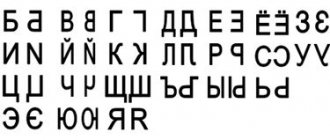Surely you have met children who have difficulty reading or pronouncing sounds, letters, and words. In early childhood it is too early to talk about the problem, but there are certain signals that should alert you. Unnoticed pathologies in preschool children can lead to negative consequences and cause difficulties in school learning and even in relationships with peers. In some cases, we can talk about dyslexia. We suggest you look into the issue in more detail.
Dyslexia: what is it?
This is the name for violations of reading processes, as well as sound pronunciation. It is expressed in incorrect recognition of various signs, symbols, letters, and difficulties with reading comprehension. Children are often susceptible to dyslexia.
Forms of dyslexia
There are different types of pathology, differing in symptoms and characteristics of the disorders:
- mnestic. The child has difficulty understanding letters - cannot associate the sound with its graphic representation;
- ungrammatical. Changing case endings, numbers of nouns, agreements, verb endings. Often found in children with systemic speech underdevelopment;
- phonemic. Associated with the underdevelopment of the sound pronunciation function. When pronouncing, paired phonemes are confused, for example, B-P, S-Sh. Sometimes there is a rearrangement of letters and parts of words when writing and reading;
- optical Associated with difficulties in learning and distinguishing visually similar letters, for example, S-O, V-R, P-N;
- semantic. Impaired understanding of words, sentences and entire texts read, perception of lexical units separately, and not in relation to each other, and as a result - “mechanical” reading. The technology may not suffer in this case;
- tactile. It only happens to blind people and results in problems understanding letters in a Braille table.
Article:
In modern specialized literature, the following terms are mainly used to denote reading disorders: alexia - to denote a complete lack of reading;
dyslexia, developmental dyslexia, or developmental dyslexia to refer to a partial disorder of reading acquisition. “Dyslexia is a partial specific disorder of the reading process, caused by unformation (impairment) of higher mental functions and manifested in repeated, persistent errors” (A.N. Kornev, 1997, p. 7).
R.I. Lalaeva (2002, p. 20) agrees with this definition and emphasizes the fact that the features of dyslexic errors are their typicality, repetitive and persistent nature.
M.E. Khvattsev (1959) defines dyslexia as a partial disorder of the reading process, which makes it difficult to master this skill and leads to many errors during reading (omission of letters, syllables, substitutions, rearrangements, omission of prepositions, conjunctions, substitution of words, omission of lines).
The approach to the problem of the etiology of reading disorders has now changed significantly, become deeper and more complex. A.N. Kornev (1997) believes that the analysis of the etiology and pathogenesis of reading disorders in children should address three groups of issues: a) constitutional prerequisites that are significant for mastering reading; b) exogenous damaging effects on their possible consequences; c) living and learning conditions, as well as the basis of psychological skills necessary for mastering reading, taking into account the methods of teaching reading used.
Even D. Ginshelwood (1917) drew attention to the presence of repeated cases of dyslexia in the same families. According to A.N. Korneva, among children with dyslexia, in 60% of cases, heredity was burdened by a wide range of borderline mental disorders in close relatives, and only 25% - by reading disorders.
Thus, in children with dyslexia, hereditary predisposition plays an important etiological role.
Most authors studying reading disorders in children consider dyslexia as a disorder caused by the external influence of pathological factors. Such an impact causes a delay or disruption in the development of mental functions that carry out the normal reading process.
Most often, children with reading disorders have a history of two or three exogenous hazards. Disabilities of the ante-, peri- and early postnatal periods occur in children with dyslexia in 85% of cases. 69% of cases in the anamnesis of children with dyslexia include complications of the ante- and perinatal periods: toxicosis of pregnancy, threatened miscarriage, Rh conflict, somatic diseases, and 27% prematurity and twins.
Neuroinfections, head injuries or the so-called “chain of childhood infections” occur in 52% of dyslexia. In the etiology of dyslexia, a more important role belongs to relatively late-acting pathogenic factors (intra- and postnatal period). In 46% of cases, their ontogenesis is complicated by the influence of several (two to four) damaging factors. Most often, complications of the birth period are followed by diseases of the postnatal period, i.e. Each previous complication increases the risk of a subsequent one. For example, genetic abnormalities of the fetus often provoke complications during pregnancy. And this, in turn, provokes postnatal neuroinfections and other somatic diseases (A.N. Kornev, 1997).
The most well-known types of lesions in the pre-, peri- and postnatal periods are: a) hypoxic, b) toxic, c) infectious and d) mechanical. Let's look at them briefly.
a) the hypoxic type is associated with the following complications - improper implantation of the egg, anemia and heart disease in the mother, fetal heart defects, malformations of the fetus and placenta, premature partial placental abruption, abnormal development of the umbilical cord, prolonged labor, asphyxia during childbirth;
b) toxic - with drug intoxication, diabetes, maternal alcoholism and metabolic disorders, as a result of which, incompatibility of the blood of the mother and fetus;
c) the infectious type of lesion in the embryonic period (from the 4th week to the 4th month of pregnancy) is observed with rubella, measles, herpes, chicken pox, polio, influenza, in the fetal period - viral and bacterial neuroinfections;
d) mechanical type - with fetal expulsion manipulations, twinning, pelvic tumors, protracted labor, intracranial hemorrhages caused by premature birth, traumatic brain injury in the postnatal period (A.N. Kornev, 1997; R.I. Lalaeva, 2002).
R.I. Lalaeva (2002, p. 26) points out that the time of defeat is of great importance, i.e. stage of development with which the damaging effect coincided. The researcher writes that “the most significant negative role in the occurrence of dyslexia is played by pathological factors that act in later periods of fetal development and in the postnatal period..., because they influence the formation of late maturing structures of the cerebral cortex, in particular the tertiary zones that ensure the functioning of complex symbolic functions (speaking, reading, writing).”
Children with specific reading disorders have a pronounced uneven development of individual sensorimotor and intellectual functions. With dysontogenesis, learning difficulties arise not only due to the immaturity of certain functions, but also due to disharmony in their maturation as a systemic formation. This introduces disorganization into their interaction and coordination in the formation of the functional basis of reading.
The persistence of dyslexia gives reason to associate this with partial underdevelopment of a number of mental functions.
Thus, three types of dysontogenesis are involved in the pathogenesis of reading disorder: delayed development, developmental asynchrony and partial mental underdevelopment. In various clinical variants of dyslexia, these types of dysontogenies are presented to varying degrees. In familial, genetically determined disorders, dysontogenesis is closer to a delayed type of development. In encephalopathic variants of these conditions, manifestations of developmental asynchrony and partial underdevelopment dominate (R.E. Levina, 1940).
Classification of dyslexia. R. Becker (1967) notes the variety of types of reading disorders. He considers it possible to group them into the following types: congenital word blindness, dyslexia, bradylexia, legasthenia, congenital reading weakness. This classification is based on the degree of manifestation of reading impairment.
O.A. Tokareva (1969) classifies reading disorders depending on which of the analyzers is primarily impaired: auditory, visual, motor. And in this regard, he distinguishes acoustic, optical and motor forms of dyslexia. Taking into account the modern understanding of the systemic structure of higher cortical functions, when classifying dyslexia it is necessary to take into account not only analytical disorders, but also the nature of violations of higher technical functions, violations not only of the sensorimotor level, but also of the higher, symbolic, linguistic level.
M.E. Khvattsev (1959), based on impaired mechanisms, distinguishes phonemic, optical, optical-spatial, semantic and mnestic dyslexia. He believes that only phonemic and optical forms of dyslexia are observed in children. Other forms are observed in aphasia due to organic brain lesions. In the classification of M.E. Khvattsev does not take into account all operations of the reading process. The presented types of dyslexia in children do not cover all cases of reading disorders.
Taking into account the disrupted operations of the reading process R.I. Lalaeva (2002) identifies the following types of dyslexia: phonemic, semantic, agrammatic, mnestic, optical, tactile.
The symptoms of dyslexia are defined differently depending on the understanding of the essence of these disorders.
As R.I. points out. Lalaeva (2002), dyslexia manifests itself in a slowdown in the process of mastering reading, as well as in a slower pace and speed of reading (bradylexia). Children experience disturbances in eye movement during reading (chaotic, erratic, uneven, spasmodic). There are a large number of regressions, excessive duration of fixations, persistent and specific reading errors.
Error groups.
1. Replacement and mixing of sounds when reading: replacement and mixing of phonetically similar sounds (voiced and unvoiced, affricates and sounds included in their composition), as well as replacement of graphically similar letters (X - Ж, П - Н, 3 - В, etc. ).
2. Letter-by-letter reading - a violation of the merging of sounds into syllables and words. When reading letter by letter, the letters are named one by one, “stacked”, strung one on top of the other.
3. Distortions of the sound-syllable structure of a word, which manifest themselves in a variety of errors: a) omissions of consonants in the case of a confluence, b) omissions of consonants and vowels in the absence of a confluence, c) additions of sounds, d) rearrangements of sounds, e) omissions, rearrangements of syllables, etc. .
4. Reading comprehension impairments occur at the level of the individual word, as well as sentences and text. This group of reading disorders is identified in cases where there is no disorder in the technical side of the reading process.
5. Agrammatisms when reading. This group of errors manifests itself at the analytical-synthetic and synthetic stages of mastering reading skills. There are violations in case endings, in agreement between noun and adjective, changes in verb endings, etc.
The symptoms and course of dyslexia largely depend on the type of dyslexia, severity, and also on the stage of reading acquisition.
At the analytical stage of mastering reading (at the stage of mastering sound-letter notations and syllable-by-syllable reading), reading disorders most often manifest themselves in sound substitutions, impaired merging of sounds into syllables (letter-by-letter reading), distortion of the sound-syllable structure of a word, and impaired reading comprehension. At this stage, the most common is phonemic dyslexia, caused by underdevelopment of the function of the phonemic system (phonemic perception and phonemic analysis).
At the stage of transition to synthetic reading techniques, the symptoms of dyslexia are most often expressed in distortions of the structure of difficult words, word substitutions, agrammatisms, and impaired understanding of a read sentence or text.
At the stage of synthetic reading, children with disabilities experience word substitutions, agrammatisms, and impaired understanding of the text they read. Most often, agrammatic dyslexia is observed, caused by underdevelopment of the lexico-grammatical aspect of speech.
Reading disorders can negatively affect the development of a child’s personality. Failures in mastering reading can cause and consolidate such character traits as self-doubt, timidity, anxious suspiciousness or, conversely, embitterment, aggressiveness, and a tendency to negative reactions. In all these cases, affective reactions are a consequence of difficulties in reading.
A.N. Kornev (1997), L.G. Kobzareva, T.I. Kuzmina (2000), R.I. Lalaeva (2002) indicate that children with reading disabilities experience difficulties in orientation in all spatial directions, difficulties in determining right and left, up and down. There is inaccuracy in determining the shape and size. The lack of formation of spatial representations is manifested in drawing, in the difficulties of composing a whole from parts during construction, in the inability to reproduce a given shape. There is a delay in differentiating the right and left parts of the body, late lateralization or impaired lateralization (left-handedness, mixed dominance).
Thus, sufficient development of spatial representations is a necessary prerequisite for the recognition and assimilation of letters by a child.
In addition, many researchers note that children with dyslexia often have oral language impairments. The violations are of a varied nature: violations of sound pronunciation, poor vocabulary, inaccurate use of words. They formulate their speech incorrectly, avoid complex phrases, limit themselves to short sentences, and often have problems with coherent speech.
In the speech therapy literature, there are attempts to systematize the manifestations of reading disorders. So, for example, R.E. Levina (1940) identifies the following main types of manifestations of dyslexia: 1) insufficient mastery of letters; 2) insufficient merging of letters into syllables; 3) incorrect reading of a word or phrase. The author believes that in mild cases these disorders are detected only at the stage of mastering written speech. In difficult cases, oral speech appears to be impaired first of all, and reading impairments are detected later. According to R.E. Levina, the basis for reading and speaking disorders is the immaturity of the phonemic system.
L.F. Spirova (1965) points out that at the initial stages of mastering reading, with underdevelopment of the phonetic-phonemic aspect of speech in children, inaccuracy and instability of speech ideas and generalizations are observed. This makes it difficult to master the sound analysis of a word. Selective failure to assimilate letters is caused not by weakness in retaining graphic outlines, the assimilation of which turns out to be normal, but by the lack of formation of generalization of sounds. If a letter does not correlate with a generalized sound (phoneme), then its assimilation will be mechanical in nature.
Sounds that are accurately perceived and correctly pronounced by children are easily correlated with letters. If children poorly distinguish sounds by ear, pronounce them distortedly or replace them in pronunciation, then the generalized idea of a given sound is fuzzy, and the perception of letters becomes difficult. Failure to assimilate letters in this case is due to an insufficient level of development of phonetic perception.
The process of merging sounds into syllables is also extremely difficult for these children. To master continuous reading, a child must correlate a letter only with a certain sound, differentiating it from others. In addition, he must have an idea of its general sound. As G.A. writes Kashe (1971, p. 51), “To merge sounds into syllables is, first of all, to pronounce them as they sound in spoken language. If a child does not have clear ideas about the sound-letter composition of a word, the formation of generalized sound-syllable images is difficult.”
R. Becker (1967) notes that reading disorders may be associated with insufficient lexical and grammatical development of speech. Replacing words when reading can also be caused by difficulties in establishing syntactic connections in a sentence. In these cases, children lack focus on the morphological analysis of words, and the analysis itself is difficult. In the process of reading, a normal child begins to guess the meaning and grammatical form of subsequent words already when perceiving the previous word. The semantic guess in this case is based on his existing ideas about the laws of language, on the feeling of language.
If a child’s lexico-grammatical structure of speech is impaired, there is no reliance on precise linguistic generalizations, on clear ideas about the patterns of word change and their compatibility in a sentence, the semantic guess in this case is either absent or plays a negative role, since it leads to a large number of specific errors.
If the morphological structure of a word is not sufficiently understood by children, then during the reading process a correct semantic guess does not arise, and agrammatism occurs, associated with difficulties in perceiving subtle grammatical meanings determined by the morphological structure of the word. Limited vocabulary and underdeveloped grammatical generalizations cause difficulties in reading comprehension.
Thus, violations of sound pronunciation, phonemic perception (phoneme differentiation), phonemic analysis and synthesis, and immaturity of the lexico-grammatical structure of speech cause difficulties in reading.
To summarize, we can draw the following brief conclusions:
1. Dyslexia is a partial disorder of the process of mastering reading, manifested in numerous repeated errors of a persistent nature, due to the immaturity of the mental functions involved in the reading process.
2. Views, teachings, definitions and terminology have changed repeatedly over more than half a century of studying the problem, and yet a single point of view has not yet been found. No one doubts that there are children with selective reading disabilities. However, the essence of this phenomenon is understood differently. From modern research by scientists it is clear that three types of ontogenesis take part in the pathogenesis of reading disorders: delayed development, developmental asynchrony and partial mental underdevelopment. Dysontogyny may present to varying degrees depending on the clinical disorder.
3. The etiology of dyslexia involves both genetic and exogenous factors (pathology of pregnancy, childbirth, asphyxia, childhood infections, head injuries).
4. The classification of dyslexia is based on various criteria: the degree of severity of reading impairments (R. Becker), disturbances in the activity of analyzers involved in the act of reading (O.I. Tokareva), violations of certain mental functions (M.E. Khvattsev, R. O.E. Levin and others), accounting for the operations of the reading process (R.I. Lalaeva).
5. Reading disorders manifest themselves in a slowdown in the process of mastering reading, in a slower pace and speed of reading, and in a large number of persistent and specific errors. The symptoms and course of dyslexia largely depend on the type of dyslexia, severity, and also on the stage of reading acquisition.
6. Children with dyslexia experience difficulties in orientation in all spatial directions, difficulties in determining right and left, top and bottom, inaccuracy in determining shape and size. Impairments in oral speech are noted: disturbances in sound pronunciation, poor vocabulary, inaccurate use of words, incorrect speech formatting, and most often, coherent speech is impaired.
7. The later dyslexia is discovered, the more severe it reaches. References: 1. Becker R. Speech impairment as a factor causing difficulties in learning to read and spell. // V scientific session on defectology. - M., 1967. - P.44-49. 2. Kashe G.A. Prevention of reading and writing disorders in children with pronunciation deficiencies. Speech deficiencies in primary school students. / Ed. R.E. Levina. - M.: Education, 1971. - 191 p. 3. Kobzareva L.G., Kuzmina T.I. Early diagnosis of reading impairment. - M.: Gnom-Press, 2000. - 64 p. 4. Kornev A.N. Reading and writing disorders in children. - St. Petersburg: Publishing House "Mim", 1997. - 286 p. 5. Lalaeva R.I. Reading disorders and ways to correct them: Textbook. - St. Petersburg: Soyuz, 2002. - 224 p. 6. Levina R.E. Disadvantages of reading and writing in children. - M.: Uchpedgiz, 1940. - 72 p. 7. Spirova L.F. Disadvantages of reading and ways to overcome them. - M.: Publishing house of the Academy of Sciences of the RSFSR, 1965. - 55 p. 8. Tokareva O.A. Reading and writing disorders (dyslexia and dysgraphia). // Speech disorders in children and adolescents. / Under. ed. S.S. Lyapidevsky. - M.: Medicine, 1969. - P.190-212. 9. Khvattsev M.E. Speech therapy. - M.: Uchpedgiz, 1959. - 258 p.
Signs of dyslexia
Manifestations of pathology are very diverse. In general, the symptoms of dyslexia are as follows:
- Changing the order of letters, syllables, numbers when composing words and reading;
- Difficulties with mastering the alphabet, multiplication tables, writing texts;
- Incorrect grip of a writing instrument (pen, pencil);
- Poor concentration, poor memory;
- Left-right confusion;
- Problems with communication and building relationships.
For a more accurate and detailed understanding of the problem, let's consider the classification of dyslexia symptoms depending on age.
Preschool children
Characterized by speech lag, difficulties in mastering words and their pronunciation, as well as basic writing skills, and deteriorated verbal memory. There is confusion in the arrangement of letters and words.
Junior schoolchildren
Children find it difficult to recognize words; words are replaced with similar ones in meaning and sound. A common occurrence is rearrangement of letters, syllables and words when reading, confusion in numbers. In many cases, impaired coordination of movements, slow mastery of skills, and problems with memorizing facts are diagnosed.
Middle school age
The children read very slowly or generally refuse to complete oral and written tasks. Dyslexics often have illegible handwriting, memory problems, and find it difficult to correctly recognize facial expressions and other signals.
Signs of dyslexia in older schoolchildren
The writing skill is poorly developed, and such children write and read with errors. It is difficult for them to perceive, summarize and retell information. Problems arise with essays and many other assignments. They work slowly and have difficulty adapting to changes.
In adulthood, dyslexia manifests itself as slow or erroneous reading, inattention, absent-mindedness, and difficulties with self-organization and self-learning.
This is how the brain works
It has been proven that in dyslexia, the brain has a special anatomical structure that affects the neurological status of a person, as well as mental characteristics. The formation of a special brain structure occurs in the 3rd month of pregnancy.
This is why dyslexia cannot be cured. With brain dyslexia, a person exhibits preserved intelligence and expanded adaptation capabilities. With dyslexia, a person can be successful in a variety of areas, including math, physics, science, business, and politics, but still have difficulty reading and writing.
As practice shows, the “treatment” of dyslexia comes down to the prescription of nootropic drugs, which should stimulate the brain and thereby increase educational abilities in dyslexia. In fact, prescribing nootropics for dyslexia is a real crime against children. We wrote about this in detail in our other article.
Causes of dyslexia
The main factor is disturbances in the functioning of brain structures. This phenomenon can be caused by various conditions, diseases, situations. Let's identify the key causes of dyslexia:
- Brain damage in the perinatal period. Possible provocateurs: anemia, heart disease, maternal infections, asphyxia, prolonged labor, alcohol and drug intoxication, premature placental abruption, fetoplacental insufficiency;
- An imbalance between the hemispheres of the brain, more often in favor of a strong predominance of the right;
- Social factors: neglect or, conversely, excessive teaching loads, isolation from peers, dysfunctional family environment;
- Genetic predisposition;
- Vision problems;
- Traumatic brain injuries and brain infections;
- Cerebral palsy.
To reliably determine the nature of childhood dyslexia, it is necessary to undergo a comprehensive examination.
Diagnosis and correction of childhood dyslexia
The speech therapist studies the history of life and development, features of speech formation, the state of the articulatory apparatus and motor skills. In preschool children, sound pronunciation, speech coherence, and the ability to perceive oral speech are assessed. Schoolchildren are examined for their writing skills, reading speed, and performance in various subjects.
According to indications, consultations with a neurologist, ophthalmologist, electroencephalogram, echoEG, and ophthalmological tests are prescribed. The choice of correction methods depends on the form of the pathology and its neglect. Traditionally, speech therapists conduct special classes.
Exercises for dyslexia
The goal is to eliminate defects in sound pronunciation, form grammatical word formation systems, develop speech hearing, and improve visual-spatial concepts:
- "Find the word." We offer to find all objects starting with a given letter, over time we complicate it and look for things whose names do not begin, but end with a certain sound;
- "Make words." We make separate words from magnetic letters “glued” to each other. For example, you need to separate “MOM GRANDMOTHER DADDY”;
- “Write the word.” Have the dyslexic read the word and write it from memory. We gradually complicate it by adding phrases;
- “Fix the sentence.” Offer to create a phrase from the mixed cards with written words. For preschool children, you can adapt it like this: make words from cards with syllables;
- “Take a guess.” All the guys love this exercise. Draw letters, syllables, words on the child’s back, and let him guess them;
- "Word Game" Take turns with the student to name words that begin with the last letter of the previous word. For example, “mother-atlas-owl-album-car”;
- “Counting the sounds.” Prepare some pasta and a cup. Name the words and offer to place in front of you as much pasta as there are sounds in the word;
- "Cute names." Let the baby affectionately name the words you said. Examples: table-table, car-typewriter, cat-cat.
You can use your imagination and come up with your own games and exercises that your child will enjoy and benefit from.
general information
Speech therapy deals with issues of written speech disorders. It is customary to distinguish alexia - a complete inability to master reading, dyslexia - the student is able to partially master the process.
There are different classifications of dyslexia. R. Becker based it on the degree of manifestation. With literal learning, difficulties arise with mastering letters; with verbal learning, it is difficult to master words. He identified different types of reading disorders.
In speech therapy, the classification developed by Khvattsev has become widespread. He identified semantic, mnestic, phonemic, optical-spatial, and optical dyslexia.
Research was carried out in Europe. According to them, among children at the elementary level of education, 10% have various problems with written speech. Becker noted that in general schools, 3% of students are diagnosed with dyslexia; in correctional schools of the fifth type (for children with severe speech disorders), this figure rises to 22%.
You can only talk about problems with reading or writing at school age; preschoolers may have prerequisites for their occurrence.
Lalaeva also conducted similar studies. According to them, in special education the share of such children is 62% of all primary school students. In institutions for persons with mental retardation - 50%. The problem is more common in boys than girls.
Prevention measures
It is easier to prevent pathology than to correct it. Develop visual-spatial and speech perception, fine motor skills from an early age. Actively use motor and educational games.
Show pictures of animals, objects, and later words and letters. Children perceive information better visually. What is seen is stored in memory immediately along with the lexical component.
It is important to start prevention long before school. Start all tasks from the simplest ones, complicating them only as you fully master the previous stage.
Features of work
To implement each direction of correctional work, certain tasks are used. The speech therapist records which sounds the student confuses as he begins to implement the first stage of the process.
It consistently clarifies the pronunciation of the sound. For better assimilation of the image, a visual and tactile analyzer is used. The letter is made from beans, plasticine, sticks, and drawn on the sand.
To make it easier to identify the position of a sound, bird-shaped diagrams are used. A drawn bird, divided into three parts with vertical stripes: the head is the beginning of the word, the body is the middle, the tail is the end.
The second stage is the separation of two similar sounds by ear. To do this, they focus on auditory control skills.
To develop the sensitivity of the visual analyzer, “noisy pictures” are offered. Letters, objects, silhouettes are drawn on them and they are covered with a large number of strokes on top. The student needs to highlight and name everything that is depicted.
The student is offered a plot picture, based on which he comes up with sentences and counts the number of words. A more complex task - a diagram is given for which you need to select a suitable sentence.
At home, you can study using ready-made workbooks. There is a good manual by Oglobina. Mazanova has a good set.










